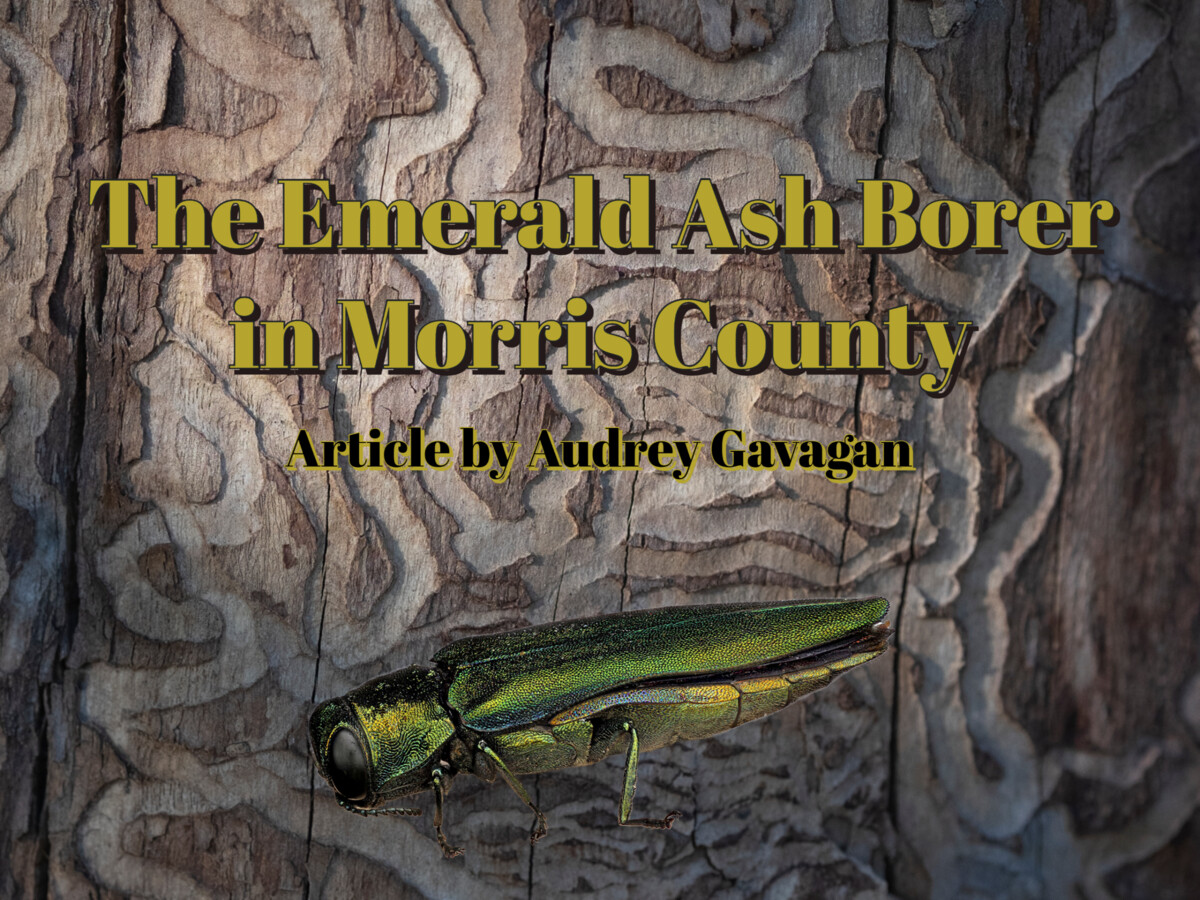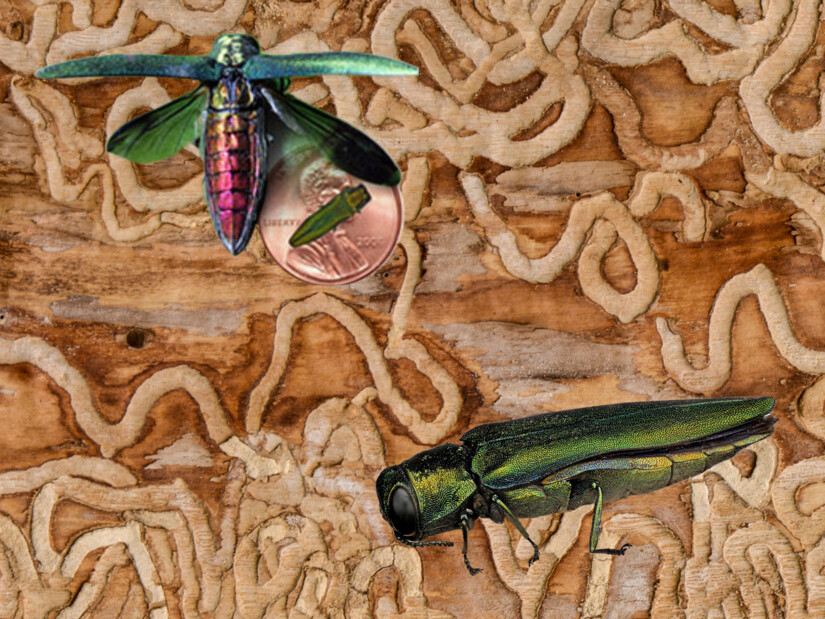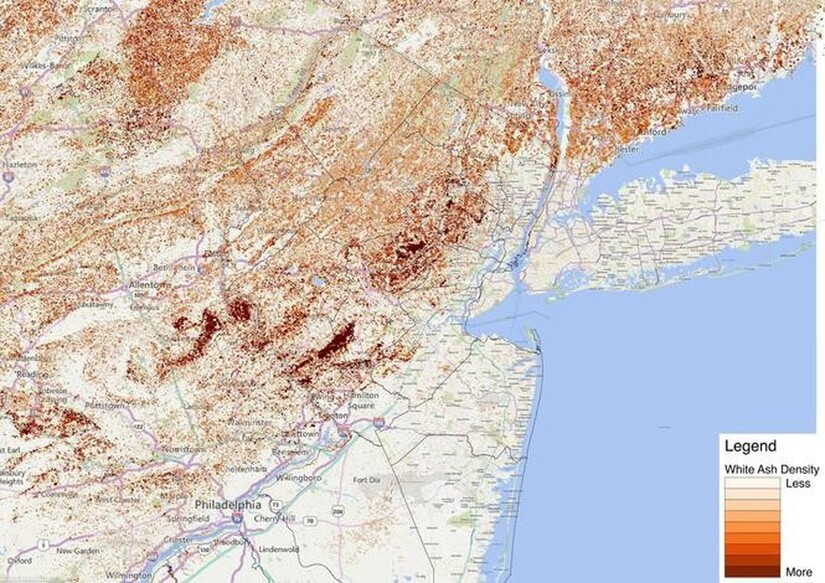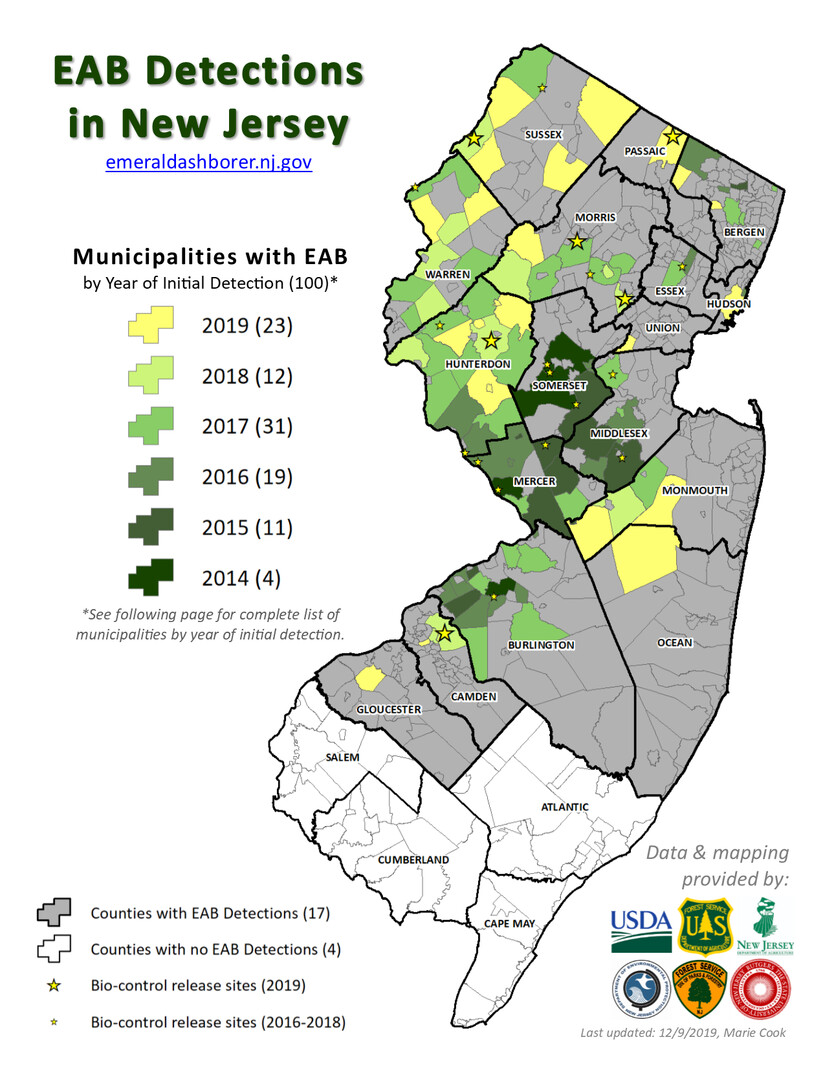Image


Article by Audrey Gavagan -
The emerald ash borer: by now almost every New Jersey resident has heard the name of this invasive pest; and many have begun to see its devastating impacts on their neighborhoods, parks, and forests.
The ash borer is native to northern China, Japan, and other parts of East Asia. It was first spotted on American soil near Detroit in 2002, where it was suspected to have arrived as a stowaway in wooden packing crates. Over the past 20 years, the ash borer has spread to thirty-six states and five Canadian provinces, decimating all species of ash tree along the way.
This brilliant, metallic green beetle is only ½ inch long, but the penny-sized bug has the potential to drive 99% of New Jersey’s nearly 25 million ash trees (covering 9% of the state's total forested area) to the brink of extinction causing an estimated $3 billion in damage.

The emerald ash borer preys solely on members of the ash species, living nearly its entire life on or within the tree. Alone the adult insects pose little threat to the ash tree, only eating its leaves and laying their eggs under the outermost layer of the bark.
However, when the larvae hatch, they burrow into the bark's inner “cambium” layer. This makes the tree unable to deliver water and nutrients from the roots up the trunk, killing the tree usually within three years.
The structural damage within the trunk causes the dead wood to become brittle, and large branches can break off at any time, endangering people and animals, and causing damage to buildings and roadways.
With the densest population of ash trees in the state, Morris County is undoubtedly set to feel a devastating impact from the ash borer’s wrath. Signs of the ash borer were first spotted in the Townships of Morris, Chester, Hanover, and Randolph in 2017. County officials have acted quickly, but the ash borer moves at an astounding pace.
Kelli Kovacevic, the Morris County Park Commission Director of Maintenance and Natural resources, says that this “exponential deterioration” means that an entire forest can become infected and die off within a matter of years. As the area has begun to reach the “peak point of die-off”, the dead and dying ash trees have become increasingly visible in the community.
 Where are ash trees found? Density map of New Jersey forests.
Where are ash trees found? Density map of New Jersey forests.An alternative to removing ash trees is injecting an insecticide into the trunk on a yearly basis. However, this method is too expensive and time-consuming to be used on a grand scale, especially when many of the ash trees on county land may endanger people and roadways, and the method is not guaranteed to succeed.
Kris McMorland of the Morris County Shade Tree Division says that the county is “past the point of trying to save the tree,” aside from a select number in the county’s arboretums and parks.
Jersey Central Power & Light (JCP&L) supplies power to most of Morris County and is responsible for removing ash trees that threaten power lines. Since the widespread power outages caused by Hurricane Sandy in 2012, the company has increased its tree-trimming budget by 50% to try and prevent anything like that from happening again.
But according to Chris Hoeing, JCP&L’s media representative, the emerald ash borer has forced the company to adopt an “aggressive removal plan” as infected ash trees risk damaging power lines and causing outages across the county.

The future of the ash tree is incredibly bleak. “At this point, the ash tree will go extinct,” says Mr. McMorland.
The Shade Tree Commission currently has no plans to replace ash with new trees but expects the canopy loss to naturally allow new species to flourish in its place.
Similarly, the County Parks Commission has no plans to replant specifically for ash tree loss but will be continuing its current tree planting programs, as well as looking into state and federal grants to restore devastated forests.
The loss of the ash tree will be felt profoundly throughout Morris County and will reshape the landscape proudly associated with the area. While the future is uncertain, between the efforts of local governments and natural regrowth, there is still hope that the county’s forests will recover.
This post expresses the views and opinions of the author(s) and not necessarily that of Morristown Minute management or staff.
Our reporters will be dedicating time and resources to investigating the roadblocks to mental health accessibility in our town.
Donate to Morristown, NJs local mental health accessibility fund today!
 Scan the QR code to donate!
Scan the QR code to donate!*The 2022 Local News Fund is a program administered by the Local Media Foundation, a 501(c)(3) organization affiliated with the Local Media Association. The program’s purpose is to allow independent and family-owned news organizations to solicit tax-deductible donations from their communities for journalism projects focusing on critical local issues. Contributions to this program are tax-deductible to the full extent of U.S. law; please consult a tax advisor for details.